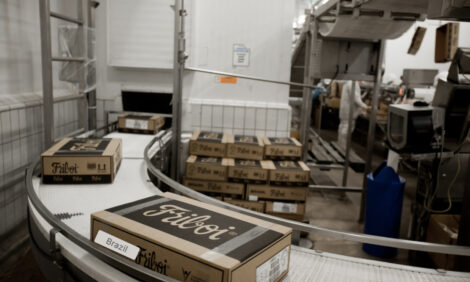



What Challenges Face Ukraine?
ANALYSIS - The trouble-torn country of Ukraine is facing more challenges than the political unrest that is being seen on televisions and in news reports around the world, writes Chris Harris.The country that is emerging out of the shadow of the communist bloc not only faces political risks but also the challenges of climate change, low global development rates and declining margins in the products it is trading and the need to open up new markets in the face of intensified competition.
According to market analyst, Sergey Feofilov from UkrAgroConsult, speaking at the recent Grain Outlook Conference in London, Ukraine needs a broad range of reforms to challenge in the modern market place – not least development of the country’s export logistics to improve their adequacy.
As it stands, Ukraine is the third largest exporter of corn in the world, the sixth largest exporter of wheat, the fifth largest exporter of barley - where just four years ago, it headed the list - and it is still the number one exporter of sunflower seed and sunflower oil.
The reason for this dominance in the global grain trade, which has a strong influence on the meat and livestock markets around the world, is that the soil and climate in Ukraine, particularly in the western regions are almost ideal for farming.
Climate change has also so far been favourable to Ukraine, helping to boost yields in central Ukraine, with last season’s crop yielding around 21 million tonnes of wheat, 27 million tonnes of corn and seven million tonnes of barley.
“Imported EU seeds and better technology have provided for a more stable production,” said Mr Feofilov.
However, he said that average yields in Ukraine are still low compared to the leading producers such as the US and Argentina.
While the country is also being hit by the volatility of prices, the outlook for this year in the grain market is positive.
With the total grain crop expected to reach 58.75 million tonnes exports are expected to rise by more than 1.5 million tonnes to 33.43 million tonnes.
“There is a positive outlook with exports higher than last year and production higher,” Mr Feofilov said.
“While corn is going down form 18 million to 17 million tonnes, but exports will be up with more milling wheat and barley.”
However, recent events in Ukraine have also seen the currency weaken with it dropping 62 per cent in value over the last six months and the effect that this will have on future production and trade is expected to be significant.
The main markets for Ukraine are first and foremost the EU followed by Egypt and the Far East.
On the domestic front, consumption is growing slowly across the country as livestock production is also rising particularly in the poultry sector.
The present political crisis with Russia could see Ukraine lose this market, although recent negotiations over gas and fuel have put a more optimistic tint on the future prospects.
The loss of the grain trade to Russia would not be significant for Ukraine but Mr Feofilov said that the loss of the more important dairy products market could be painful.
Among the main difficulties facing the country are the cost and physical logistics of transporting and exporting the grain and other products.
The cost of transporting feed grain has risen from UAH100 per tonne in 2008/09 to UAH250 in 2013/14.
Much of the grain is exported through Ukraine’s 15 ports on the Black Sea and three on the Azov Sea and a large proportion of the grain is exported in the first three months of the season after harvest from October to December, reaching five million tonnes a month.
The loss of Crimea to Russia has put pressure on the transportation system to the ports and the depreciation of the hryvnia have forced costs up.
While the low currency has made exports more attractive to other countries, the farmers are facing increases in in-put costs such as seed and fertilisers and well as fuel.
One of the ways the country is looking to improve the transportation logistics is to open up the Dnieper River and to rely less on rail. Costs of transporting grain on the river from elevators built near the river are three to four times less than by rail.
While the regions affected by the unrest in the country are not major grain and farming areas and the profits from farming are lower than in other regions of Ukraine because of higher transportation costs, the country is generally seeing a decline in capitalisation in farms.
The main concerns over future harvests and food production, rest outside the political upheaval.
The concerns are over the state of the currency and the cost of production with necessities such as fertiliser costs rising.
There are also concerns over the weather with the need for more rain to help ensure a good crop, but overall the success or otherwise of Ukraine’s agriculture and food production rests more on outside global factors than internal political concerns.









